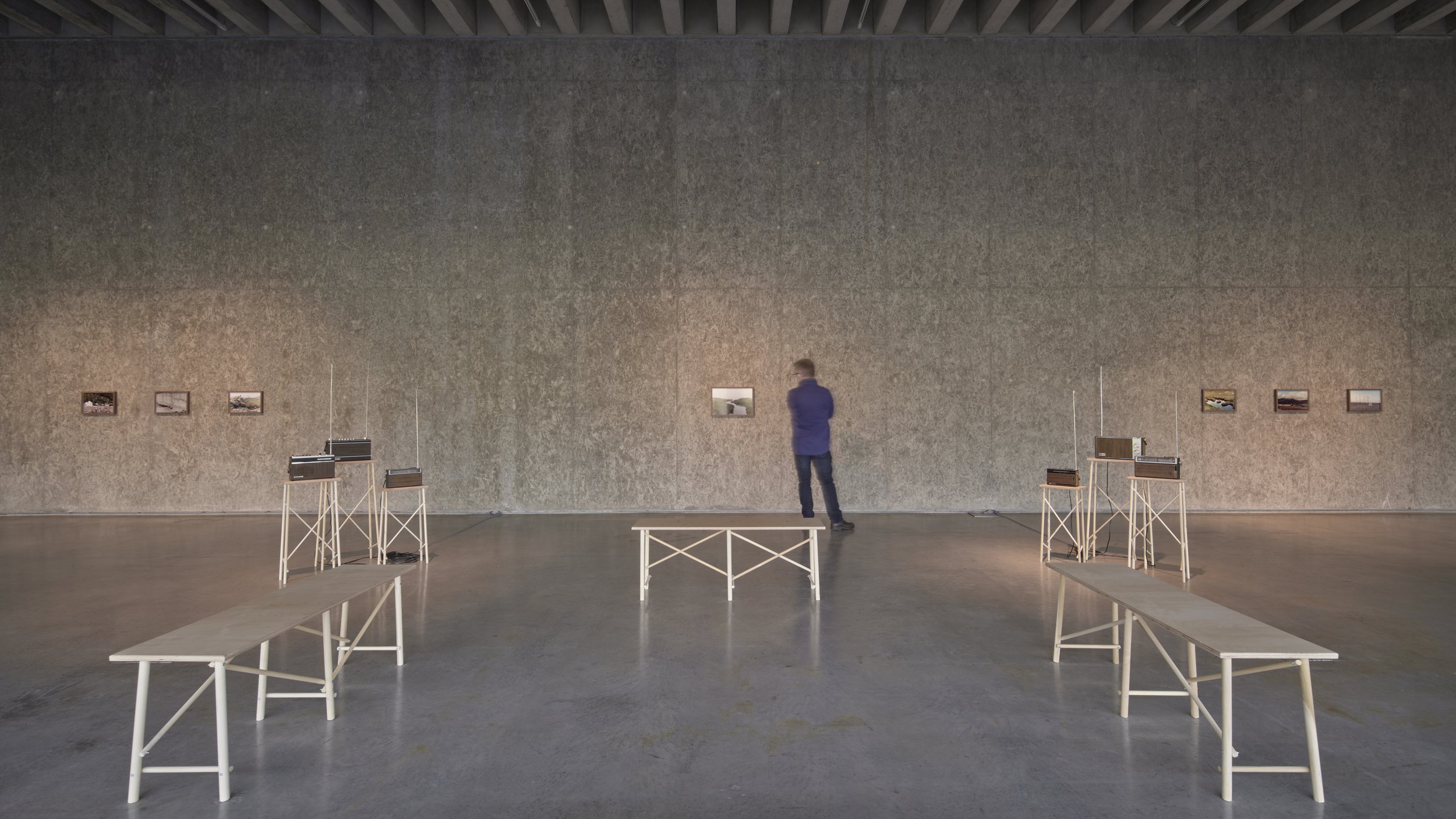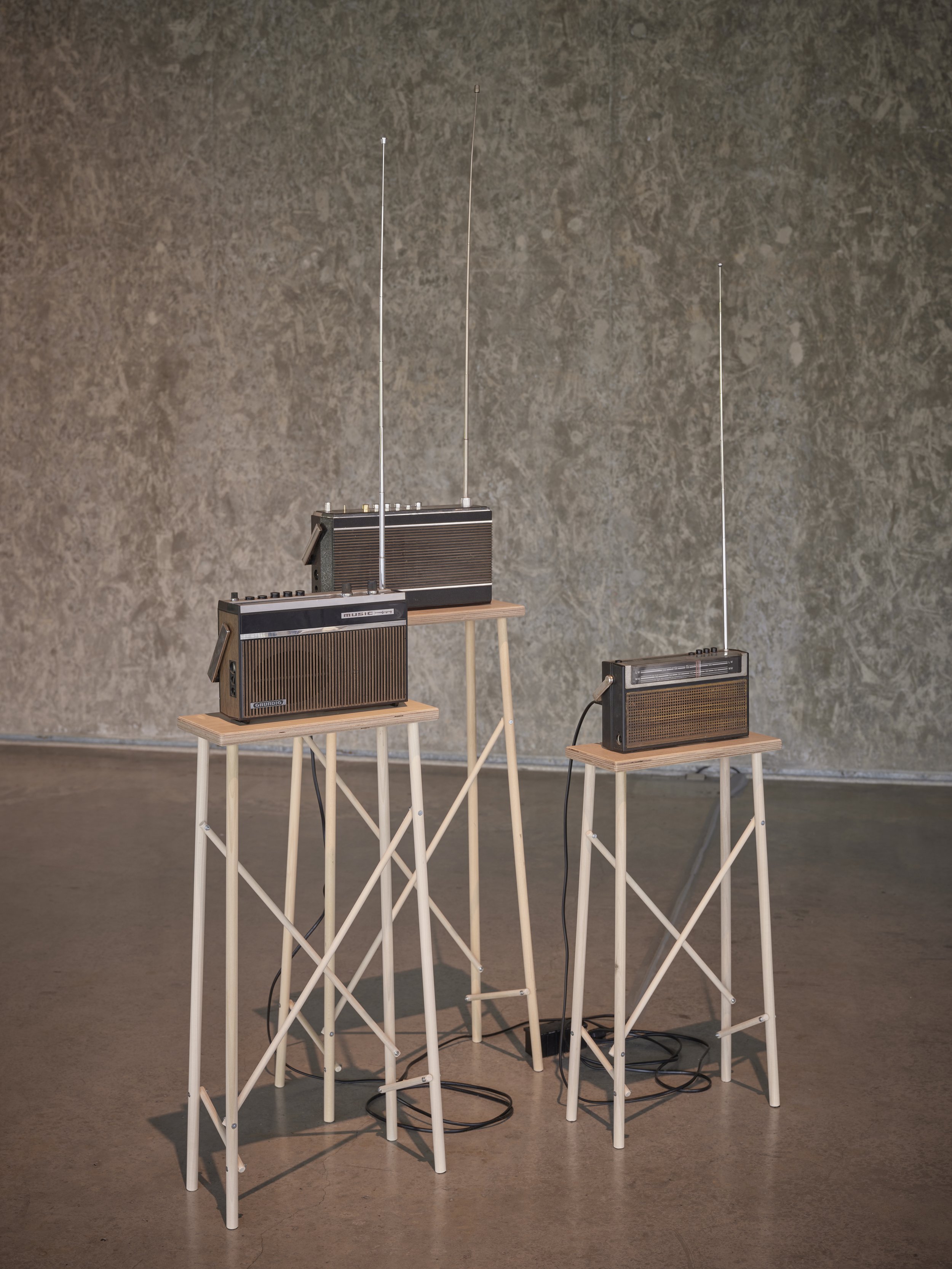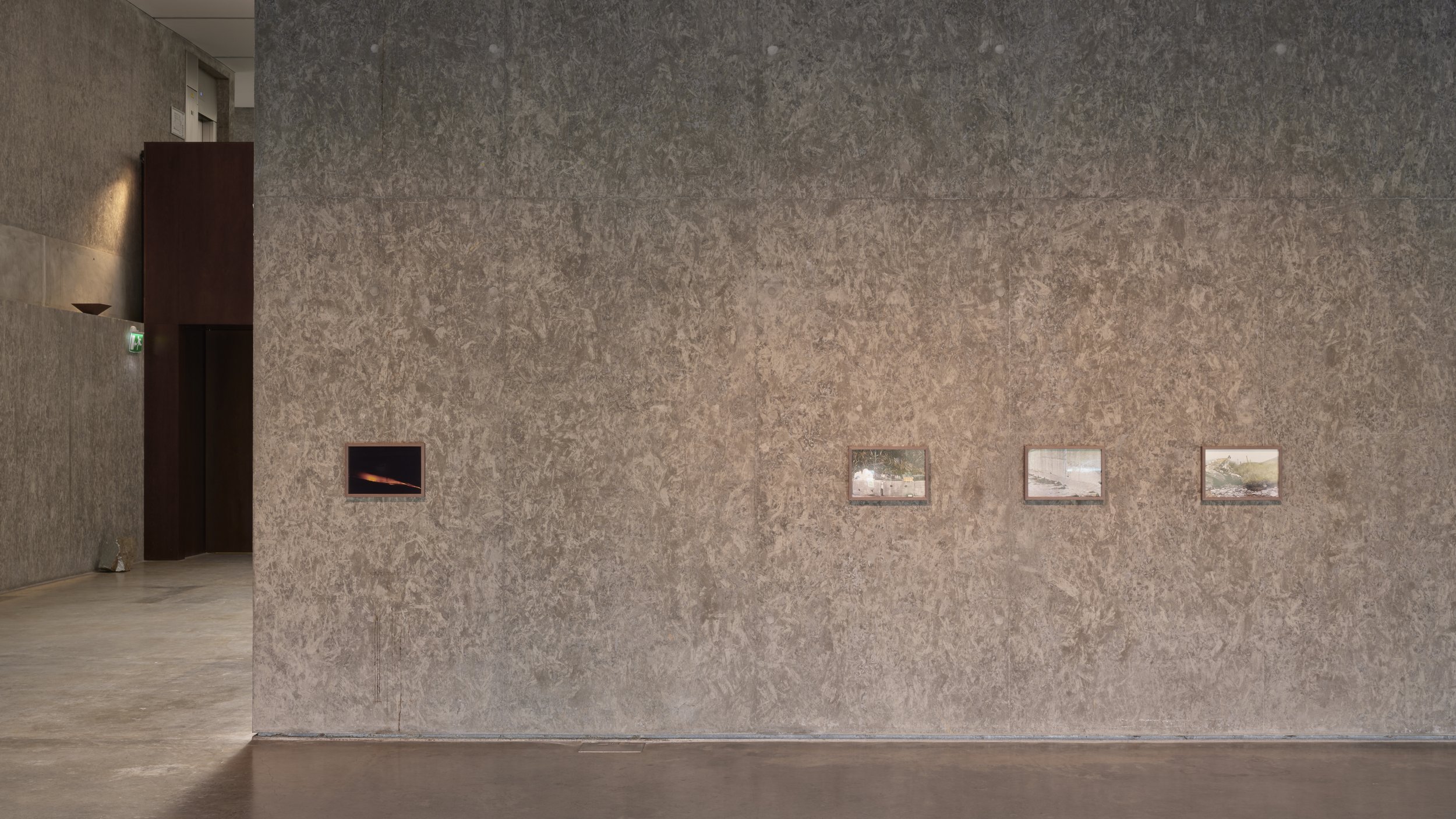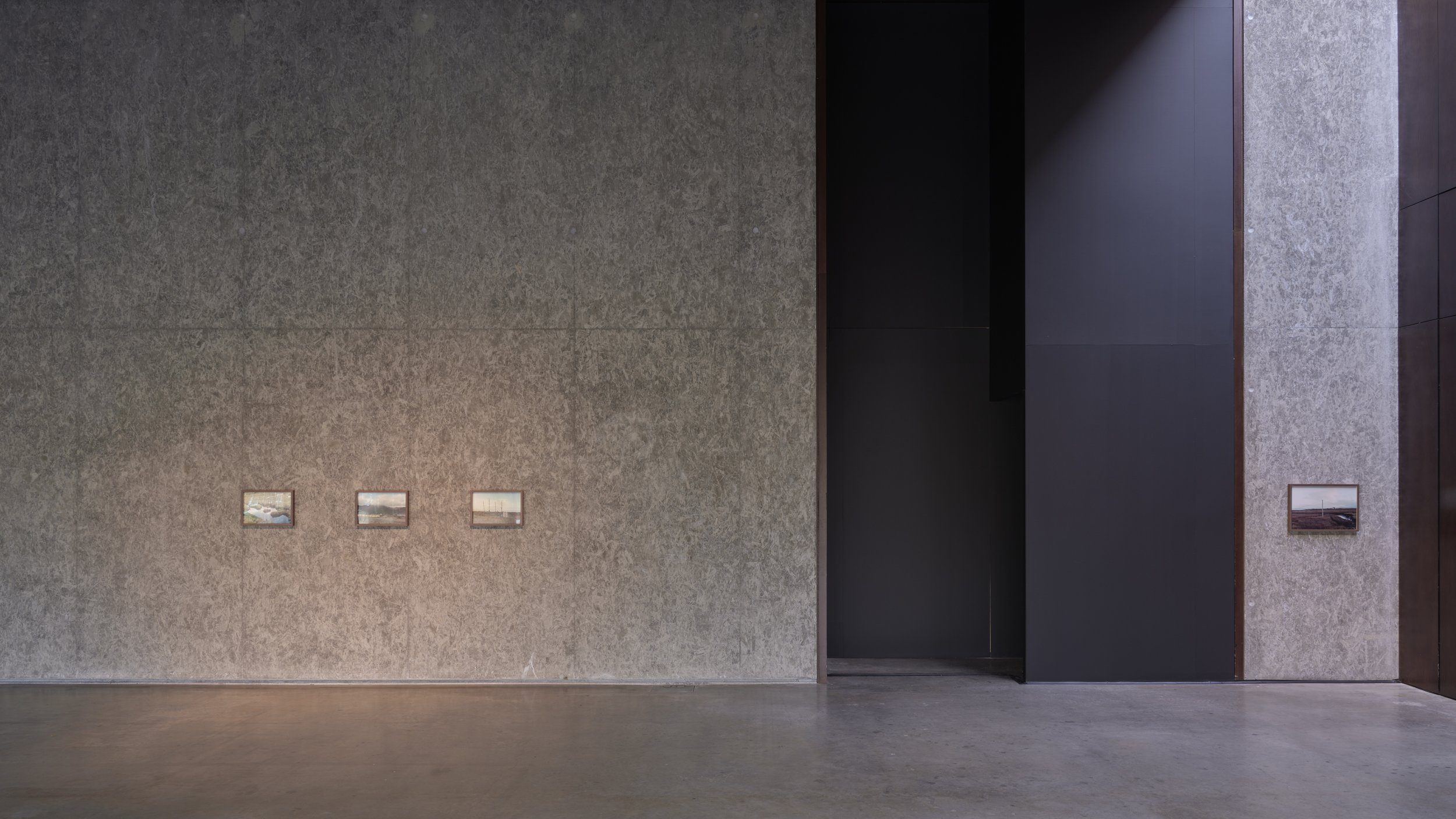Soft Rains Will Come (2022)
Soft Rains Will Come (2022). Documentation Video. Filming: Frank Abruzzese.
Soft Rains Will Come (2022) takes the form of a spatial sound installation that operates as a live radio broadcast within the gallery. Influenced by the experimental fiction of David Markson, the compositions of John Cage, and research drawn from climate modelling and weather forecasting, the installation combines live shortwave radio signals, found recordings of shortwave radio, field recordings, analogue photography, and written research materials to transmit an ‘imaginary landscape’ within the installation space.
Amongst the static and squawks of communication, an unknown voice broadcasts itself to twelve transistor radios. This acousmêtre is an eavesdropper and an oracle, outlining a speculative future of the earth, as it transforms under an erratically changing climate.
Like the weather itself, this sound work exists as an entropic system that constructs and recombines itself in endlessly disordered ways. Past and present fragments of sound are perpetually rearranged, to make predictions of an anxious future.
Soft Rains Will Come was first presented at VISUAL Centre for Contemporary Art, Carlow, from 26 February – 26 May 2022. It was subsequently shown as part of TULCA Festival of Visual Arts: The World Was All Before Them (curated by Clare Gormley) and as part of Pallas Projects/Studios’ Periodical Review: Practical Magic (selected by Basic Space). The full installation was purchased for inclusion in the Arts Council of Ireland’s Visual Art Collection in December 2022.
A publication accompanying the exhibition, featuring texts by David Toop and Ian Maleney, and an ‘in conversation’ between Benjamin Stafford and Christopher Steenson is available here.

















Artwork Credits
Voice over: Sanja Todorovic
Radio stands and bench fabrication: Tadhg McSweeney
